Steigler Winery
Sopron Region
Founded in 2015 by Bálint Lőrinczy, Steigler is an exciting addition to the winemaking scene in the Sopron region. Just across the border from Austria, near Lake Fertő, inemaking here dates back to the Celts. The region has a noticeably German-character, with its wines sharing some similarities to the wines of Burgenland. Winemaker Tamás Varga has 21 hectares (52 acres) of organically farmed vineyards to work with. Steigler’s vineyards are located on some of Sopron’s best slopes, including the Steiger, Frettner, and Spern Steiner. One of the important characteristics of the soil in this region is the mica slate on the surface, which is found nowhere else in Hungary. As in Burgenland, Kékfranos (Blaufränkisch) is the most important grape in Sopron. In addition to Kékfrankos, Steigler also grows Cabernet franc, Furmint, Merlot, Muscat Ottonel, Pinot noir, Syrah, Zöldveltelini (Grüner Veltliner), and Zweigelt. They are especially proud of their Furmint plantations. Furmint was a major grape in the region until the early 20th century. All of Steigler’s wines are organic.
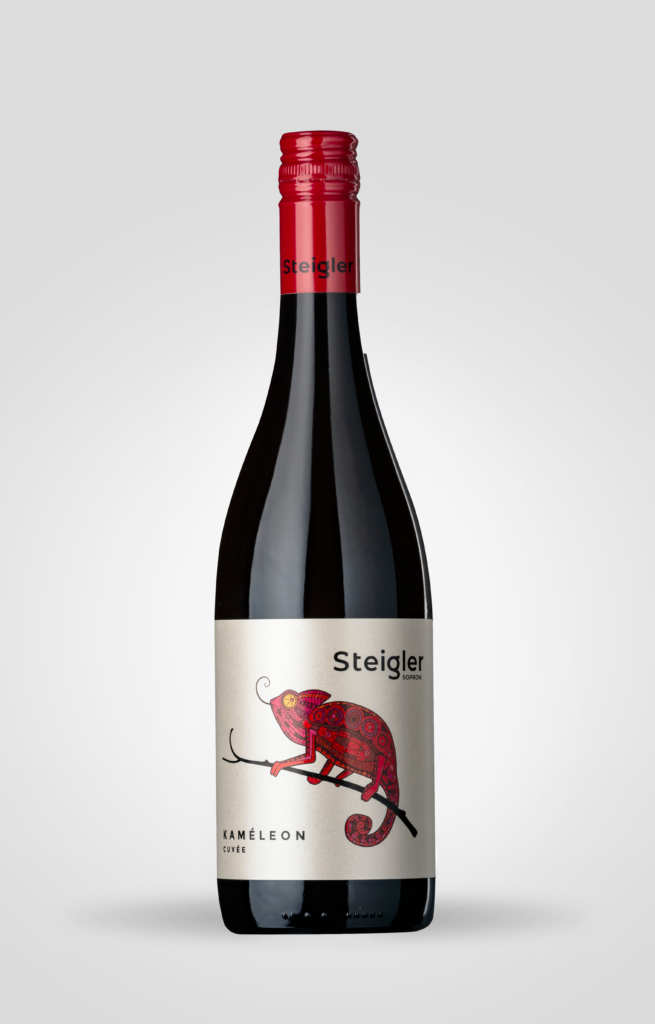
Kaméleon Red, 2019
The striking chameleon on the label of this wine has a meaning. According to the winery, the chameleon is a diverse, unique, and perfect creature—just like the wines under the chameleon label (there’s also a white and a rosé). Diverse because multiple grape varieties are used in the blend. Unique because it has a different face from vintage to vintage. And, perfect because it is made in a natural way, born from the schist terroir that the grapes were grown on. This blend is composed of Kékfrankos, Merlot, Pinot Noir, Cabernet Sauvignon, and Zweigelt. The Kékfrankos provides acidity (as well as typical cherry, black cherry, ripe cherry, tobacco, and spiciness). Merlot gives silkiness. Cabernet Sauvignon contributes spiciness. And, Pinot Noir adds some lightness. All of this results in a wine with complex and layered aromas and flavors. It’s also quite mineralic, earthy, smokey, and a bit oaky. The grapes are from eight to 20 year old vines, grown on mica schist and chalky soil. Fermentation happened in open vats for ten to 15 days, and the wine was aged in 500-liter oak barrels for ten months. With its long fruit finish and smooth tannins, this is a very food-friendly wine. It’s perfect with antipasti or a Hungarian-style cold plate (cheese, cold cuts, fresh vegetables, bread, pumpkinseed oil). It’s also a great match for all manner of Hungarian stews, chicken paprikás, and traditional dishes made with a paprika (such as the local Soproni specialty, poncrichter stew, or bean stew).
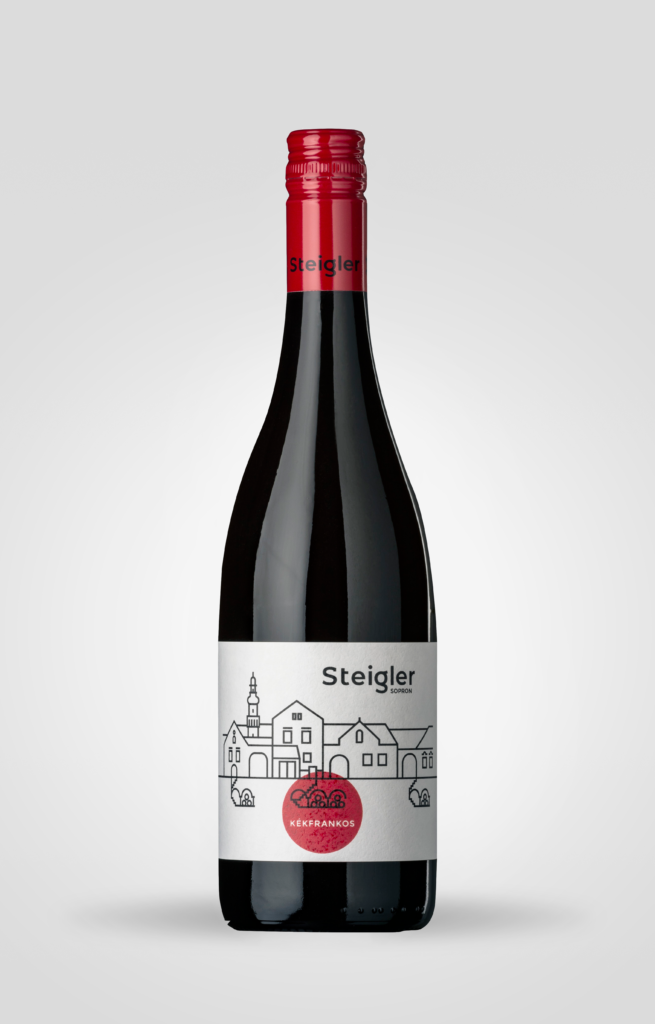
Kékfrankos, 2020
Sopron is somewhat of an outlier compared to other Hungarian wine regions. Lying just across the border from Austria, it shares its viticultural traditions with Austria’s Burgenland region, of which Sopron was once the capital. Just like in Burgenland, Kékfrankos is also the main variety in Sopron. The region’s climate is also unique, as its proximity to the Alps makes it a sub-Alpine region, with lower median temperatures, cooler and wetter summers, and higher rainfall than the rest of the country. Lake Fertő (called Neusiedl in Austria) straddles the border, and has a major tempering effect on the climate—ensuring that winters are relatively mild, summer is moderately hot, and fall is generally long and hot. This wine is a textbook Sopron Kékfrankos, capturing this terroir. It’s elegant and balanced, medium-bodied, and a little reserved. It has fresh acidity and a touch of minerality (from the schist in the soil). It is more spicy than fruity, but there’s lots of tasty sour cherry, cherry, and plum going on. Kékfrankos is a grape that really reflects its terroir, and this one is a perfect example of that. This is an organic wine, from vines that are eight to 20 years old. It was fermented in open vats for 12 to 15 days, and aged in 50 percent steel tanks and 50 percent oak barrels for 12 months. This wine is a crowd-pleaser. It’s really good to enjoy on its own, or with pasta and red sauce dishes, lasagna, or osso bucco.
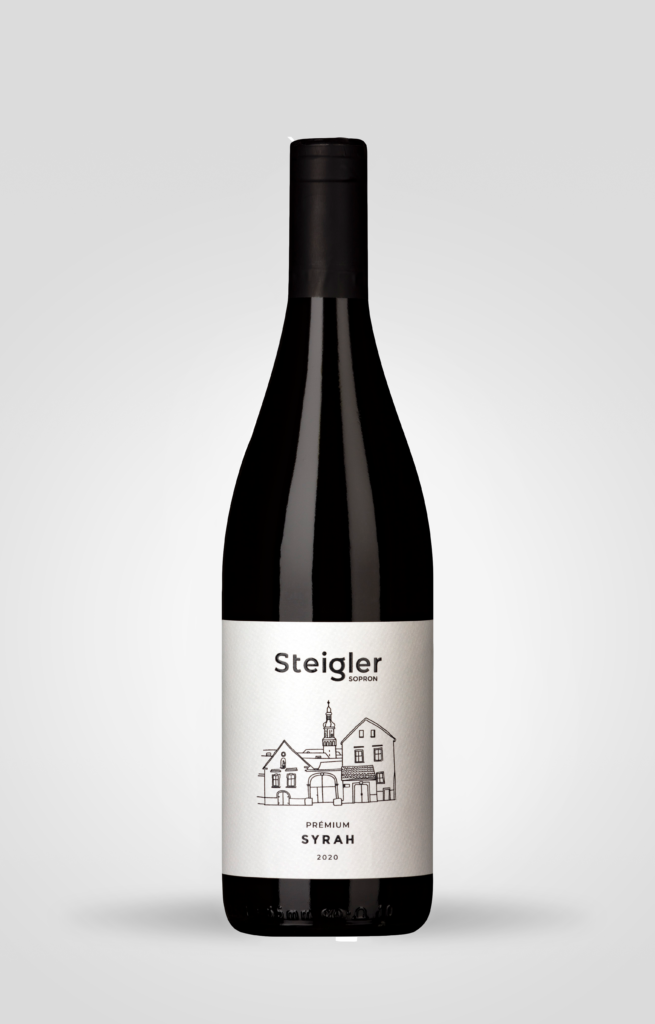
Syrah Premium, 2020
Viticulture has been practiced in Sopron since Roman times, but lots of credit goes to the German settlers who began arriving in the 13th century. Known as poncichter (from the German Bohnenzüchter, which refers to growers who planted beans between the rows of vines), they helped make Sopron wine one of Hungary’s most sought-after exports by the 15th century. By the 17th century, Sopron had laws banning the sale of wine from elsewhere, making the tavern business the privilege of local growers. Soproni wine was widely exported across Europe. After World War Two, the ethnic Germans, who had tended most of the vines, were deported, and the many Jewish wine merchants were all lost in the Holocaust. The state cooperatives that followed favored quantity over quality, and Sopron’s wines were mediocre for decades (as in the rest of the country). Sopron was slower than other regions to rebuild after the government changes in the early 1990s, but things have been speeding up—thanks to wineries such as Steigler. There are only 311 hectares of producing Syrah vineyards in Hungary, so this popular international variety is a relative rarity. But this is a lovely example. It is a full-bodied and concentrated wine, with some meatiness to it. On the nose, there are scents of eucalyptus, mint, blackberries, lilac, coffee, and black pepper. It’s a fruity wine—heavy on the cherries, cranberries, and currants—with some dark chocolate and rum flavors. Grapes were hand-harvested, and fermentation took place in open vats for 16 days. It was aged in 500-liter oak barrels on fine lees for one year. This is a big wine, with a creamy texture and a smooth and fruity finish. Like all of Steigler’s wines, it is organic. Try it with burgers, game, or beef stew (marha pörkölt).
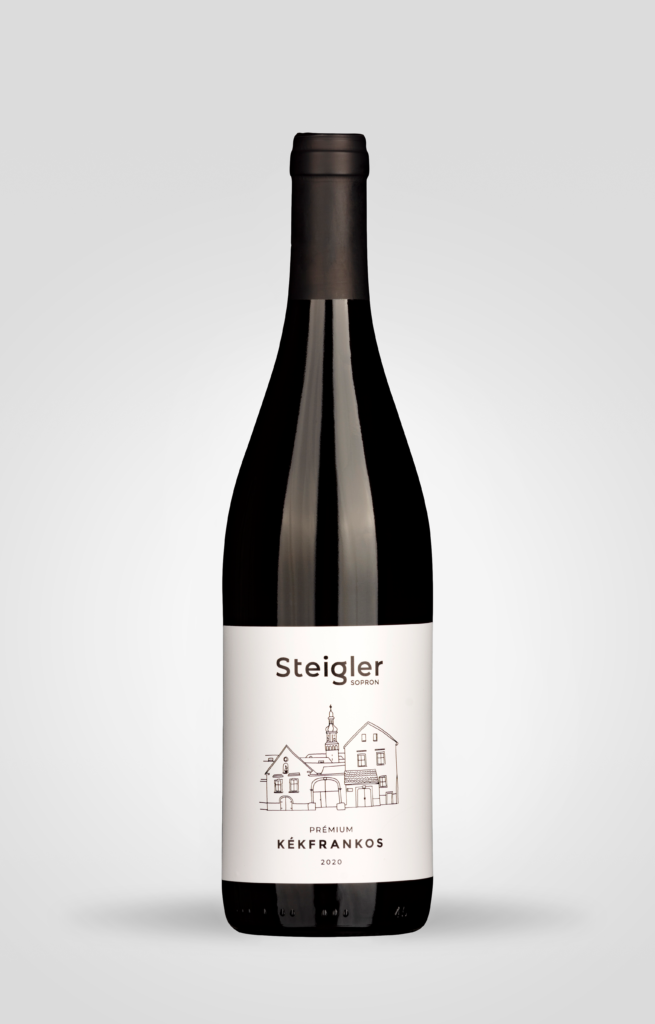
Kékfrankos Premium, 2020
Kékfrankos is king in the western Hungarian Sopron region, which makes predominantly red wine. The city of Sopron even dubs itself the “Capital of Kékfrankos”, and some of the world’s largest areas of Kékfrankos vineyards are here. Kékfrankos is called Blaufränkisch just across the border in Austria, and it is one of the super stars of Central Europe. It’s grown widely across the Carpathian Basin, and has made this region its home since the Middle Ages. According to Hungarian urban legend, the grape gets its name from the days when occupying Napoleonic troops purchased wine in Sopron using their ‘blue francs’, which was worth more than the local currency. Because of Sopron’s relatively cool climate and partly calcareous soils, Soproni Kékfrankos is usually dominated by red berry fruitiness and fresh spiciness, with relatively high acidity and elegant, restrained tannins. This is an organic wine, which comes from nine-year-old vines which were hand-harvested. This Premium Kékfrankos is fruitier, deeper, and more concentrated. Fermentation took place in open vats, and the wine was aged for 12 months in 500-liter oak barrels. There are very ripe fruity flavors, and even some cassis, on the nose. The texture is silky, and the mica schist soil adds some minerality. This is a full-bodied wine with elegance and complexity. It will keep in your cellar for some years, but you can also open it tonight and enjoy it with grilled meat, barbecue, or duck (maybe with some sour cherry sauce, Hungarian style).
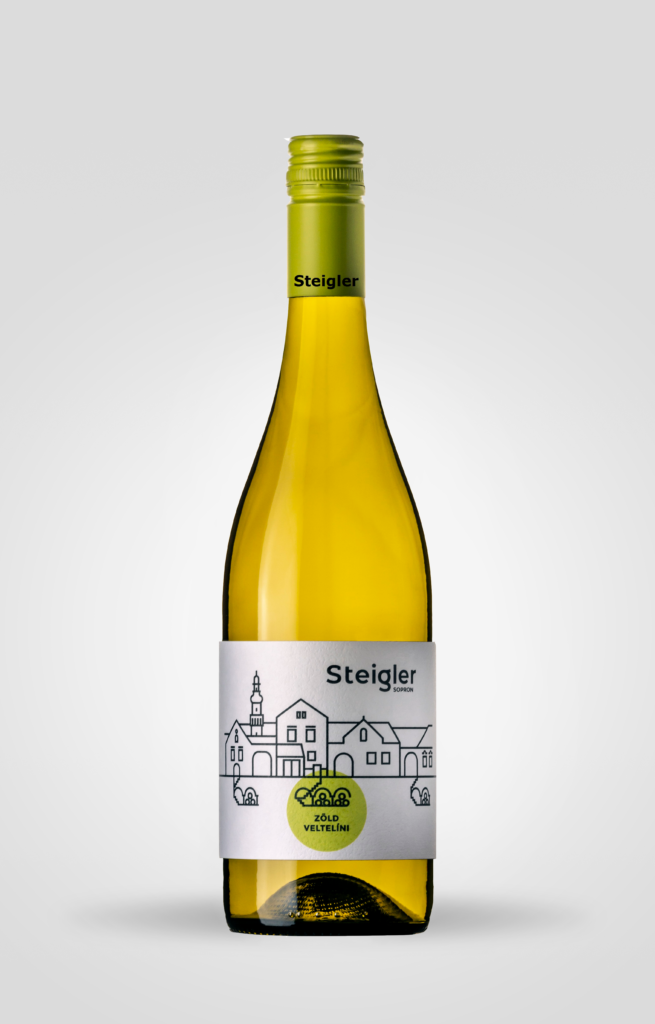
Zöldveltelini, 2021
Grüner Veltliner, Austria’s flagship variety, is known in Hungary as Zöldveltelini. It’s the most common white variety in the Sopron region. Sopron lies just across the border from Austria and shares its viticultural traditions with Burgenland. Winemaking in the Sopron region goes back to the Celts. The Romans continued, and then the Bavarian settlers kept it up. The Steigler Winery is one of the region’s newer wineries, and it is producing some exciting (and delicious) organic wines. The winery is located in the center of Sopron, and has a fascinating hundreds of years old cellar system. Steigler’s vineyards cover 21 hectares, and are located in Sopron’s best areas, including the Steiger, Frettner, and Spern Steiner vineyards. Grapes for this wine come from five-year old vines from the Steiger vineyard, which has mica slate and brown forest soil. The region’s microclimate is heavily influenced by the saline Lake Fertő, which straddles the border of Hungary and Austria. The lake brings humidity, but breezes originating from the Alps provide a moderating effect. Both the winery owner (Bálint Lőrinczy) and the winemaker (Tamás Varga) have deep roots in the region. This wine has a greenish-yellow color, and a really fresh aroma. This wine was aged on its fine lees, giving it a bit of extra body. On the nose and the palate, it has fresh herbs, pure grapefruit, green apples, and fresh lime. It has great acidity, and a touch of salty minerality. This is a food-friendly wine, which goes great with the regional specialty, Wiener Schnitzel. It’s also great with other fried foods.
SOLD OUT
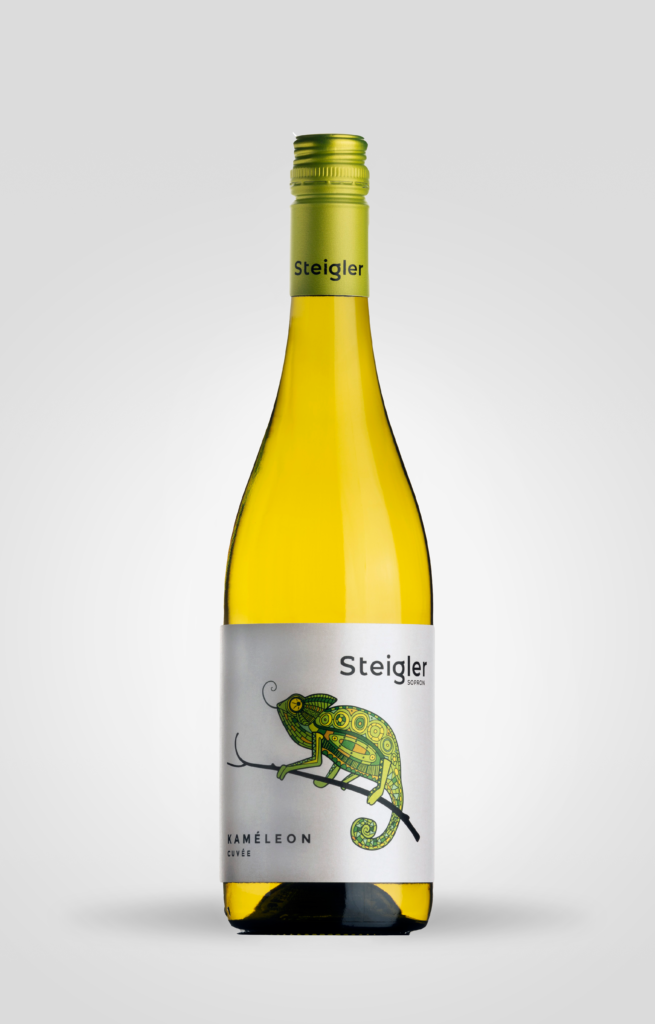
Kaméleon White, 2021
Sopron lies in northwestern Hungary, directly on the border with Austria. The region has around 1,500 hectares of vines, which are planted on the slopes of the Sopron and Kőszeg Hills and around Lake Fertő (aka Lake Neusiedlsee), at altitudes of 150 to 400 meters above sea level. The region is pretty much a direct continuation of the vineyards around Rust and the Leitha Hills in Austria. On the Austrian side, Grüner Veltliner is the über-trendy flagship variety. The grape also grows on the Hungarian side, and is known as Zöldveltelini. In this blend, Zöldveltelini provides the backbone, with a bit of Muscat Ottonell added for its soft and floral characteristics. Zöldveltelini is a versatile variety, capable of producing many styles of wines—from sparkling wines, to crowd-pleasing everyday wines (such as this one) which you can pop open on a Monday night with takeout pizza, or a Friday evening with friends. This organic wine is on the lighter side, with lots of fresh flavors, and a bit of mineral complexity. Citrus (mainly lime and lime zest), green apple, and fresh flowers dominate, with a bit of spice at the end. Fermentation was in stainless steel tanks, and ageing was also in steel tanks over the fine lees for ten months. The zesty acidity in this wine makes it a perfect match for fried food (like the classic Wiener schnitzel, or Bécsi szelet in Hungarian), seafood (like oysters or clams on the half shell), or salty food (like olives or potato chips). We also think it’s great with the classic Hungarian pasta with cabbage (Káposztás tészta).
SOLD OUT
